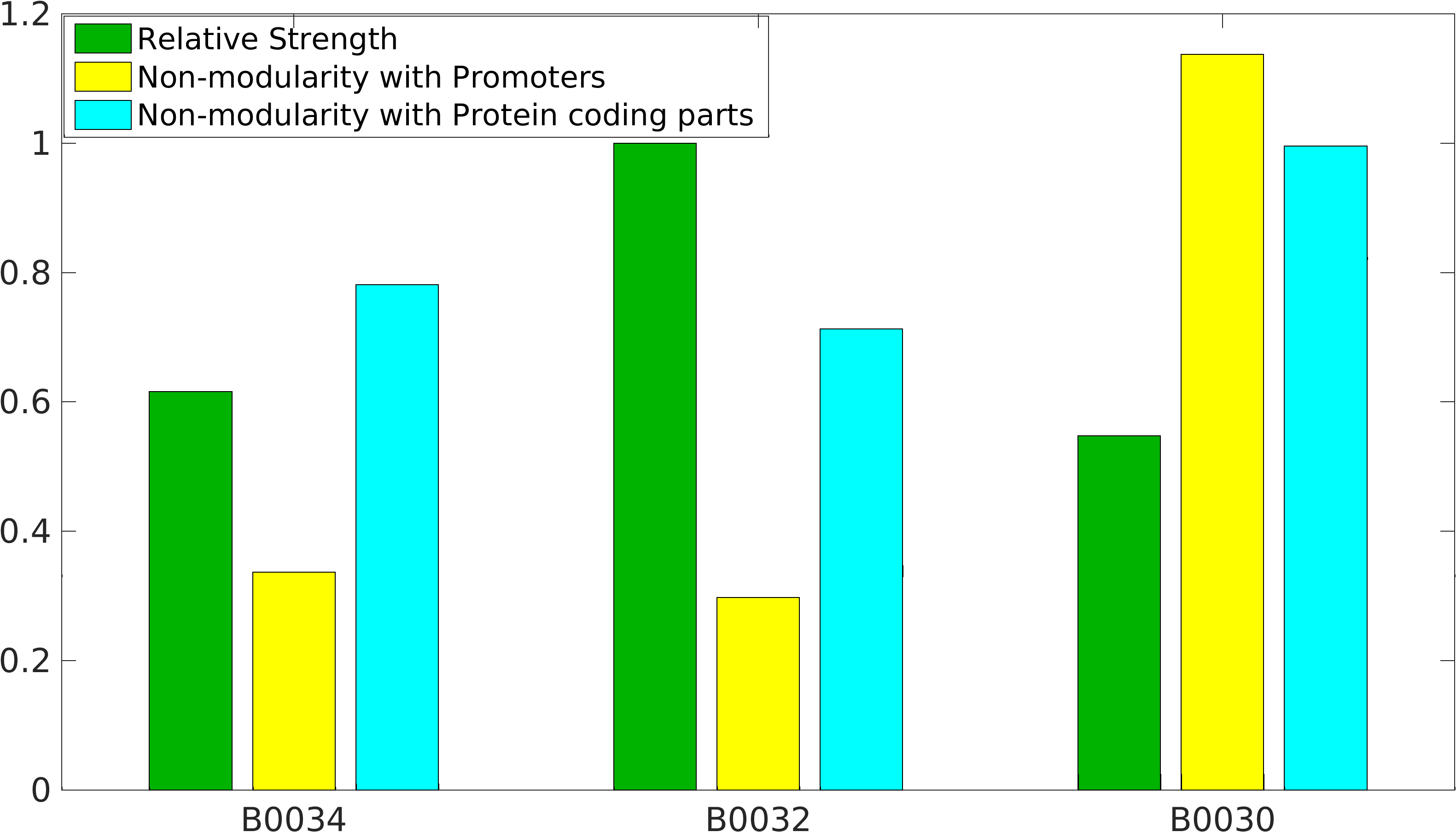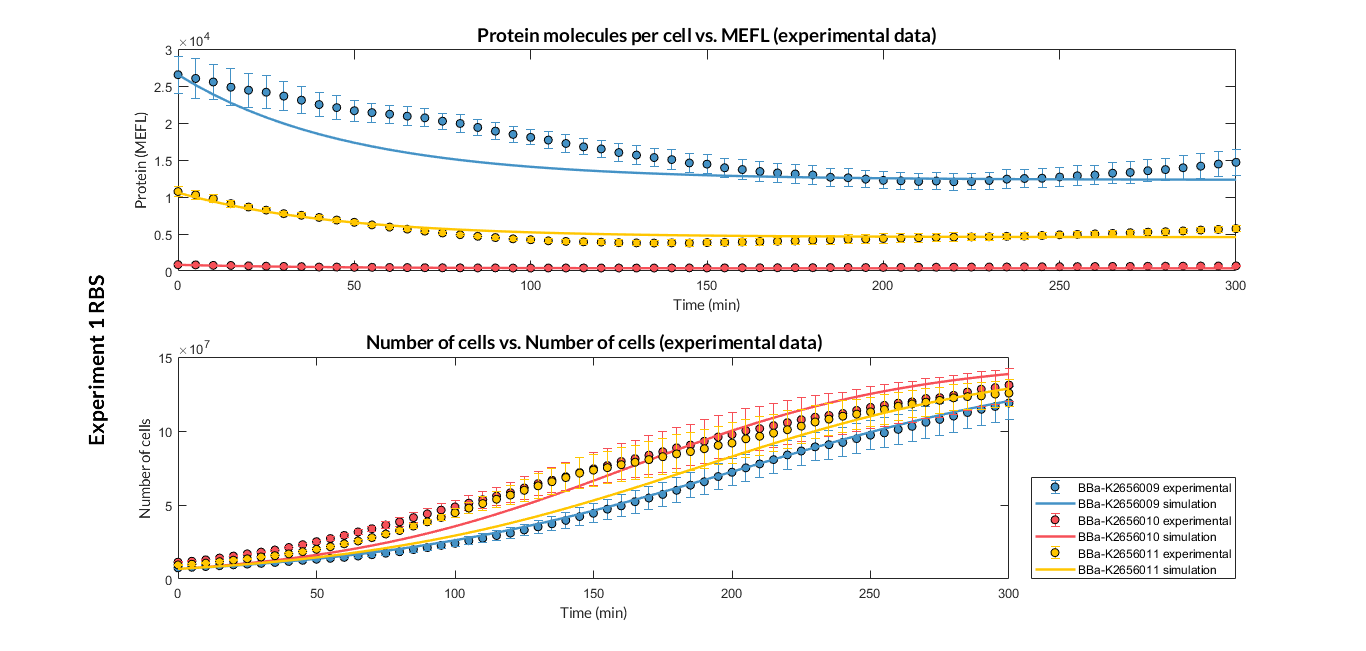Difference between revisions of "Part:BBa B0032"
Carolinarp (Talk | contribs) |
|||
| Line 41: | Line 41: | ||
By using this [http://2018.igem.org/Team:Valencia_UPV/Experiments#exp_protocol experimental protocol], we have obtained the parameters to valide our [http://2018.igem.org/Team:Valencia_UPV/Modeling#models constitutive model]and rationale choose its optimized values based on each RBS tested. | By using this [http://2018.igem.org/Team:Valencia_UPV/Experiments#exp_protocol experimental protocol], we have obtained the parameters to valide our [http://2018.igem.org/Team:Valencia_UPV/Modeling#models constitutive model]and rationale choose its optimized values based on each RBS tested. | ||
| + | |||
| + | [[File:T--Valencia_UPV--optimization_exp1_RBS_graphUPV2018.png|900px|thumb|none|alt=RBS experiment 1.|Figure 1. RBS expression experiment with K2656009, K26560010 and K2656011 RBS basic parts]] | ||
{|class='wikitable' | {|class='wikitable' | ||
Revision as of 19:05, 17 October 2018
RBS.3 (medium) -- derivative of BBa_0030
Weak1 RBS based on Ron Weiss thesis. Strength is considered relative to BBa_B0030, BBa_B0031, BBa_B0033.
Usage and Biology
IIT Madras 2016's Characterization
Modelling
Global non-modularity towards promoters & protein coding parts and relative strength was estimated for RBSs B0030, B0032, B0034 in our [http://2016.igem.org/Team:IIT-Madras/Model#Modularity_of_RBS_parts modelling]
Experimentation
Biobrick RBSs B0030, B0031, B0032, B0034 were used in our 'Noise in Device' experiment to understand the role of RBS parts in giving rise to noise.
Sequence and Features
- 10COMPATIBLE WITH RFC[10]
- 12COMPATIBLE WITH RFC[12]
- 21COMPATIBLE WITH RFC[21]
- 23COMPATIBLE WITH RFC[23]
- 25COMPATIBLE WITH RFC[25]
- 1000COMPATIBLE WITH RFC[1000]
Functional Parameters
| biology | -NA- |
| efficiency | 0.3 |
(Relative to BBa_B0034)
Team Warsaw 2010's measurement
RBS strength (relative to B0034): 33,96%Contribution
Group: Valencia_UPV iGEM 2018
Author: Adrián Requena Gutiérrez, Carolina Ropero
Summary: We have adapted the part to be able to assemble transcriptional units with the Golden Gate method and we have done the characterization of this RBS.
Documentation:
BBa_K2656010 is the BBa_B0032 ribosome binding site standardized into the Golden Gate assembly method. It also includes the BioBrick equivalent scar in the 3' extreme, so the insertion of this supplementary bases ensure the correct spacing for the CDS expression when assembled into a TU.
Characterization of this part was performed with the transcriptional unit BBa_K2656102, which was used in a comparative RBS expression experiment with composite parts BBa_K2656103 and BBa_K2656101. They all were assembled in a Golden Braid alpha1 plasmid using the same promoter, coding sequence and terminator.
By using this [http://2018.igem.org/Team:Valencia_UPV/Experiments#exp_protocol experimental protocol], we have obtained the parameters to valide our [http://2018.igem.org/Team:Valencia_UPV/Modeling#models constitutive model]and rationale choose its optimized values based on each RBS tested.
| Table 1. Optimized parameters for the BBa_K2656010 RBS. | |||
| Parameter | Value | ||
| Translation rate p | p = 0.01 min-1 | ||
| Dilution rate μ | μ = 0.01641 min-1 | ||
We have also calculated the relative force between the different RBS, taking BBa_K2656009 strong RBS as a reference. It has been defined as the quotient between the values of the protein in equilibrium of the results of the simulation of one RBS and another reference RBS. Likewise, a ratio between p parameters of the different RBS parts and p parameter of the reference RBS has been calculated.
| Table 2. BBa_K2656010 (GB B0030 RBS) relative strength and p ratio. | |||
| Parameter | Value | ||
| Relative strength | 0.045 | ||
| p parameter ratio (pRBS/pref) | 0.048 | ||


